social justice
Mortgagees paying for corporate price gouging
Mortgagees paying for corporate price gouging Editor This item by Andreas Bimba embraces material extracted from William Michell’s blogsite [1]. It appears in a Facebook…
Land – funding and inflation
Letter from Colin Cook (SA) Re: Finding the tools to end the cost-of-living crisis [ERA Review Jan/Feb 2024] Towards the end of 2020 there was…
Postcolonial Reparative Action: Transnational Memory-Making and Historical Remembrance as Potential Sites for Social Bond Recovery and Practising Global Mnemonic Solidarity
In The Force of Non-Violence, Judith Butler (2020) challenges the audience to rethink the binary and Manichean ways in which we – as a global interconnected society – politically, socially, historically, and culturally interpret, internalise, and ultimately construct frameworks and discourses of “violence” and/versus “nonviolence.” Butler (2020) brings to the surface the fraught semantics behind discourses [...]
3 Cities That Became Better Places for Young Black Men
Less than 24 hours after Trayvon Martin was shot and killed in Florida as he returned home with a bag of Skittles, then-President Barack Obama addressed a rattled nation. Standing among a group of Chicago-area teens, he announced the launch of My Brother’s Keeper, an initiative to address the persistent opportunity gaps faced by boys and young men of color, and to ensure all young people can reach their full potential.
“I firmly believe that every child deserves the same chances that I had,” said Obama from a podium in the White House’s East Room. “That’s why we’re here today. To do what we can, in this year of action, to give more young Americans the support they need to make good choices and be resilient, and to overcome obstacles and achieve their dreams.”
Martin’s death became a catalyst for a national reckoning against structural racism, prompting many cities to respond with efforts to uplift communities of color. Some have shown signs of success; others have fallen short. But ten years after its launch, My Brother’s Keeper, now known as the MBK Alliance, has seen remarkable progress in three cities in particular, helping them prove that the power of collaboration can solve deeply entrenched problems that have plagued America for decades.
Crushed by negative news?
Sign up for the Reasons to be Cheerful newsletter.
[contact-form-7]
Serving as a financial and advisory resource, MBK Alliance helps foster collaborations between cities to achieve progress across six milestones identified as keys to young people’s future success: early childhood education, reading at grade level by the end of third grade, graduating from high school, completing a post-secondary education or training, getting a job and staying safe from violence.
Backed by the power of the nationwide collective, three “Model Communities” have emerged as standouts in achieving these goals: Newark, New Jersey; Omaha, Nebraska; and Tulsa, Oklahoma. Here’s a glimpse into how they did it.
Newark
Eleven years ago, Newark, with 112 homicides, had the third highest murder rate in the nation, as gun violence wracked the city’s most disadvantaged neighborhoods.
By last year that number had plummeted to 47, the lowest number of homicides in 60 years, and continuing a trend of sharply falling violent crime rates in New Jersey’s biggest city. The year prior, in 2022, Newark saw fewer homicides than it had since 1961. And two years before that, in 2020, not a single shot was fired by a police officer in Newark all year.
“The larger ecosystem in Newark working to improve public safety came together and got to work,” explains Mark Comesañas, executive director of My Brother’s Keeper Newark, which functions as an initiative of the Newark Opportunity Youth Network.
The fruits of that labor came during a crucial time, as the impact of the Covid-19 pandemic and George Floyd protests collided to shine a light on the nation’s inequities.
Mayor Ras Baraka, a son of the city, reappropriated five percent of the police budget to fund violence prevention work. Newark launched a new Office of Violence Prevention and Trauma Recovery, which uses data analysis, anti-racism and hate crime units, victim support, partnerships between police and social workers, and other proven public health approaches to increase safety. And the Newark Community Street Team, which deploys outreach workers and high-risk interventionists to mediate disputes and stop bloodshed, now works with youth most at-risk to perpetrate or become a victim of violence.
“Newark is no longer on the ‘top 10 most violent city list,’ where it had a coveted position for almost 50 consecutive years,” Street Team founder Aqeela Sherrills recently told Yahoo! News.


Become a sustaining member today!
Join the Reasons to be Cheerful community by supporting our nonprofit publication and giving what you can.
Most importantly, says Comesañas, also born and raised in Newark, young people, often left out of discussions aimed at understanding their challenges, now sat at the table, participating in public forums on crime and meeting with elected officials. Their success has influenced advocates to reach back further to engage youth as young as 13, he adds.
“Young people are our community’s greatest untapped resource,” he said. “Instead of seeing them as a problem to be solved we saw them as an asset in solving those problems.”
Being an MBK Alliance Model Community has allowed Comesañas and others from Newark to share their experiences, while also learning from the wins and losses of other cities, he says. For instance, his organization gleaned lessons from New York’s Young Men’s Initiative and NYC Men Teach, and an action guide from Sacramento that helped to fine tune efforts in Newark.
Still, Comesañas knows the work is not done.
“Our next phase is to ensure there’s even greater integration across all systems,” he says. “We need City Hall, community orgs and charter schools all working together and having conversations; we need to hear from more young people.”
Tulsa
Being named a My Brother’s Keeper Model Community in 2023 didn’t turn the community in Tulsa, Oklahoma, complacent. It inspired them to do more.
“We’ve activated nearly 100 more partners since becoming a Model Community, working to understand experiences of Black young men and boys of color through the milestones,” said Ashley Philippsen, executive director of Impact Tulsa, which leads local MBK efforts.
Tulsa earned its Model Community status for the strides it made towards the first predictor of success identified by My Brother’s Keeper: early childhood education.
Oklahoma began offering universal preschool education in 1998, yet several years ago thousands of children in Tulsa County, including more than 1,000 in the City of Tulsa, were not enrolled, Philippsen says. Changing that required the convening of residents, community organizations, city and county departments, businesses, and the school district, among others.
“Together, we had to shift the narrative around preschool education,” Philippsen says.
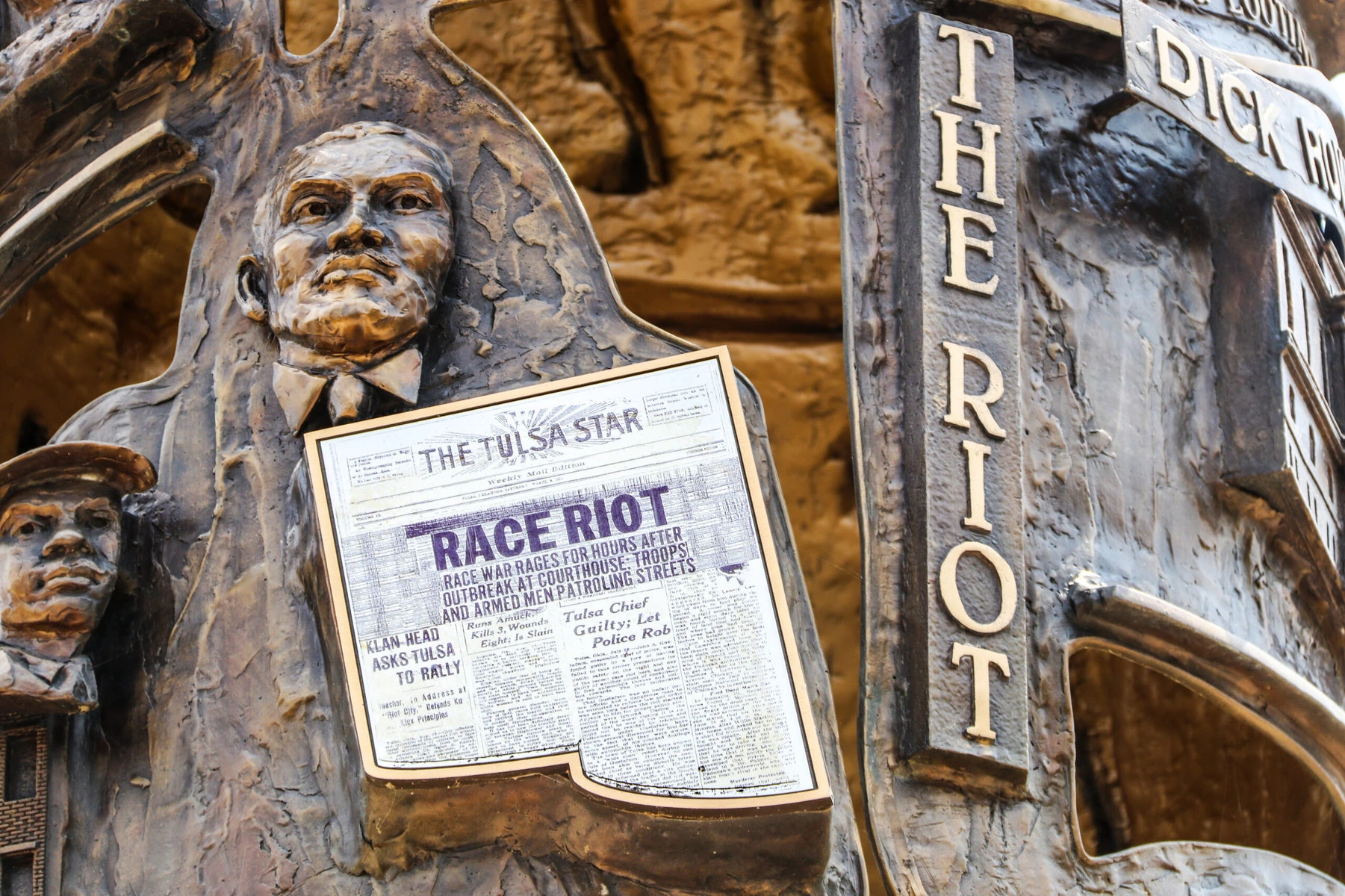 Credit: Shutterstock
Credit: Shutterstock
Clergy, daycare teachers, parents and schools formed teams and went door-to-door, armed with data they had collected to better understand the factors keeping kids out of preschool. “We used data as a flashlight to help our partners identify and remove roadblocks for young people in underserved communities,” Philippsen says.
They paired this face-to-face persuasion with a mass media campaign that purchased space on billboards and aired commercials on television. Churches and others preached a new awareness about the benefits of early education, while also addressing barriers to enrollment, such as a lack of programs in underserved neighborhoods.
To better understand the complex challenges of students in Tulsa, the Tulsa Child Equity Index, a project of Impact Tulsa and Tulsa Public Schools, was created in 2018 to pinpoint areas of need. The index includes data on 14 different neighborhood indicators, including gun violence, employment rate, walkability, educational attainment and socioeconomic status. Each helps to identify structural and systemic barriers, intersections between opportunity and access, Philippsen explained.
“It helps to build a deeper understanding of the factors that impact students in certain neighborhoods,” she said.
As a result of these efforts, enrollment in early childhood programs in Tulsa increased from 65 percent of eligible students in 2013 to 82 percent in 2020, and attendance overall for students of color rose by 33 percent. And while some of those gains were lost amid the pandemic, the benefits of involvement with My Brother’s Keeper, particularly as a model community, continue.
“It’s really been powerful to be part of this national network, learn from each other and share best practices so that other cities can experience the same successes,” Philippsen says.
Omaha
When Mississippi-born William Barney moved to Omaha, Nebraska, 24 years ago, he saw many of the problems he’d become familiar with as he traveled the country identifying strengths and struggles in African American communities.
Among the challenges, he said, were high levels of gun violence, low graduation and employment rates, and housing challenges.
He got to work, launching the African American Empowerment Network, a convener for those looking to solve issues that impact the Black community.
“We started by talking to a few people about things we could do together to improve conditions here,” Barney says, recalling conversations he had with pastors, residents and others.
Since then those talks have multiplied. Church visits and door-to-door chats became formal sit-downs with nonprofits, businesses, Omaha Public Schools, the police department, elected officials and many more, Barney says.
“We listen to each other, facilitate on collective tables, and develop plans to create change,” he adds.
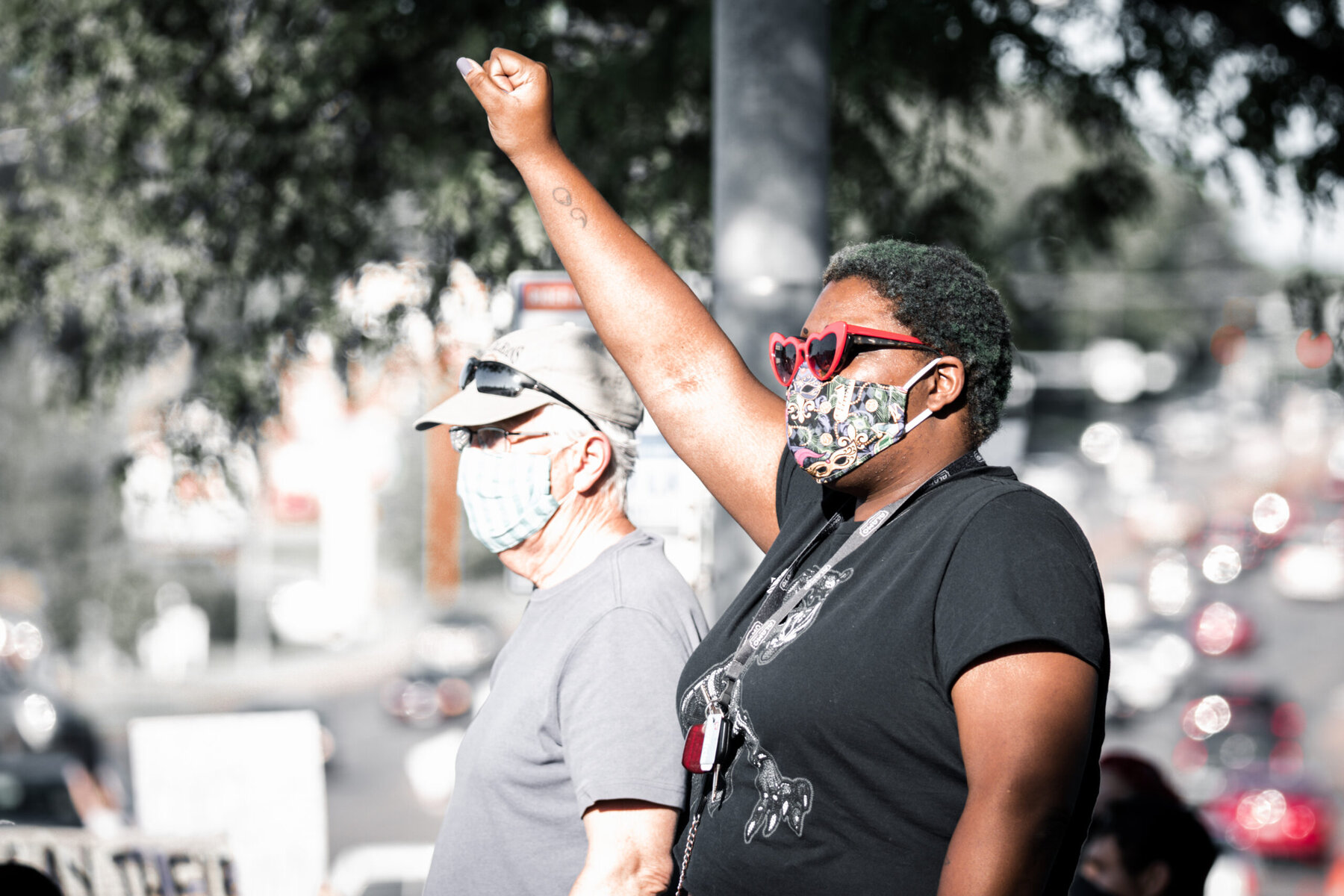 Credit: Shutterstock
Credit: Shutterstock
Those talks have led to action, like a partnership between the school district and more than 40 organizations. Some 500 youth are now enrolled in Step-Up Omaha, a summer employment and training program for 14-to-21 year olds. And the Empowerment Network has worked to expand employment programs, foster civic engagement among youth and other residents, increase exposure to STEM fields and reach other diverse communities, including Latinx, Native American and Asian groups.
The outcome? Graduation rates rose and the unemployment rate plummeted, Barney said. Shootings are down with homicides dropping by 33% since 2011. And Omaha 360, an initiative of the Empowerment Network, is now recognized nationally as a model for violence prevention and intervention.
None of this work can be done in silos, he explains.
“No one individual, organization or business can solve these problems themselves,” Barney said. “We have shown that we can only create change by working together.”
The post 3 Cities That Became Better Places for Young Black Men appeared first on Reasons to be Cheerful.
The Village of Islington Murals: Exploring the Role of AR and the Artist in Resisting Neoliberal Fascism in Public Art
Graffiti and murals have a critical pedagogical function with the potential to visually transform urban space into sites of political, cultural and social resistance. From Diego Rivera to Banksy and beyond, artists have claimed underused surfaces of concrete and brick as a canvas to raise consciousness, share knowledge, and critically examine hegemonic systems of power. [...]
Existing funds could put a roof over the head of 4,000 young people experiencing homelessness
Community Housing Industry Association Media Release An additional 2,090 homes housing more than 4,000 young people experiencing homelessness could be built by drawing on $1 billion already set aside by the Commonwealth, according to new modelling that will be presented to federal politicians in Canberra today. The money was allocated last year to the National Housing Infrastructure…
The post Existing funds could put a roof over the head of 4,000 young people experiencing homelessness appeared first on The AIM Network.
Palm Sunday wrap
By Jane Salmon Palm Sunday rallies bring together Jew and Muslim, Hindu, Buddhist, many varieties of Christian, humanists and atheists to share a vision of ecumenical cooperation and tolerance. The rallies traditionally promote human rights and equity while also condemning war. Thinkers, believers and visionaries speak to each topic all over the country. Sydney’s rally…
The post Palm Sunday wrap appeared first on The AIM Network.
Palm Sunday Walk for Justice and Peace
The Refugee Advocacy Network About the Palm Sunday Walk for Justice and Peace – Melbourne, 24 March 2024 Since 2014, the Refugee Advocacy Network, has brought together a wide range of groups to plan the Palm Sunday Walk for Justice for Refugees. During the 1970s and 80s there was a tradition of holding Peace rallies…
The post Palm Sunday Walk for Justice and Peace appeared first on The AIM Network.
ACFID welcomes Australian Government’s reinstatement of funding to UNRWA
Australian Council for International Development (ACFID) Media Release The Australian Council for International Development (ACFID), the peak body for humanitarian and development organisations, welcomes the Australian Government’s announcement to reinstate the funding of the United Nations Relief Works Agency (UNRWA). “This decision is overdue given the urgency of the humanitarian catastrophe in Gaza and UNRWA’s…
The post ACFID welcomes Australian Government’s reinstatement of funding to UNRWA appeared first on The AIM Network.
Finding Justice Over the Airwaves
Saidu Umar thought his future was secure in 2006 when he poured his life savings into a piece of land in Sokoto, a city in northwestern Nigeria, for ₦120,000 ($77). His dreams, however, spiraled into a nightmare when, 16 years later, the children of the late owner laid claim to the land.
The late owner’s children claimed that their father hadn’t sold the land before he passed away, making it rightfully theirs. In the legal debacle that unfolded, they alleged possession of documents proving their ownership and demanded that Umar either leave the land or provide financial compensation.
Shocked and confused, the 53-year-old farmer sought refuge with the police and filed a complaint. His claim was later dismissed because he, as is common in Sokoto, had purchased the land in good faith via a verbal agreement with the owner and could not provide any validating documents.
 Saidu Umar was able to reclaim his land in 2022 thanks to the Kukana radio show. Credit: Abdullah Tijani
Saidu Umar was able to reclaim his land in 2022 thanks to the Kukana radio show. Credit: Abdullah Tijani
“I tried everything, but people would tell me that I didn’t have evidence to prove that I owned the land. I even met with several community leaders asking for help but to no avail,” Umar says. “That was until I pleaded my case on Kukana.”
Kukana, roughly translated to “my woes” in English, is a weekly radio show with over 1.7 million active listeners, as reported by the show’s hosts. Since its inception in 2016, the program, which airs on Vision FM, Sokoto’s first private radio station, has committed to voicing the grievances of those unable to access Nigeria’s justice system. In each episode, hosts of the show present victim complaints and then work towards providing solutions.
Crushed by negative news?
Sign up for the Reasons to be Cheerful newsletter.
[contact-form-7]
With his dream of owning land almost slipping away, Umar met and explained his ordeal to the host of Kukana, Ibrahim Salihu Isa, who, after researching the matter, invited him to appear on the show. During the episode, Isa introduced Umar to Ibrahim Tudundoki, a Sokoto-based human rights activist and lawyer.
Tudunoki took the matter to the Sultan’s Palace, Sokoto’s traditional arbiter. Because the Sultan was traveling, he discussed Umar’s case with a local judge, who invited the divisional police officer to investigate further. At this time, the late owner’s brother, Chika Maidaw, got in touch with Isa and confirmed that his deceased brother had indeed sold the land.
 Ibrahim Salihu Isa, the host of the Kukana radio show that has helped address the grievances of thousands of people. Credit: Abdullah Tijani
Ibrahim Salihu Isa, the host of the Kukana radio show that has helped address the grievances of thousands of people. Credit: Abdullah Tijani
“He listened to me on Kukana and was willing to come and testify,” Umar explains. “That was how I got my land back.”
Tudundoki, a regular guest on Kukana, believes in the show’s cause and regularly communicates with Isa to follow up on cases of vulnerable people in Sokoto free of charge.
“Most of the people who appear on Kukana have nowhere to turn to, and if a program like this is not available, they will end up being victims of injustice,” Tudundoki says.
Sokoto is Nigeria’s poorest state, with nearly 90 percent of its population of over six million, living below the poverty line, and more than three-quarters unable to read or write in English, the country’s official language. According to Isa, Kukana’s popularity as an alternative platform for justice stems from these socioeconomic hurdles that render the legal system an unnavigable labyrinth to the majority.
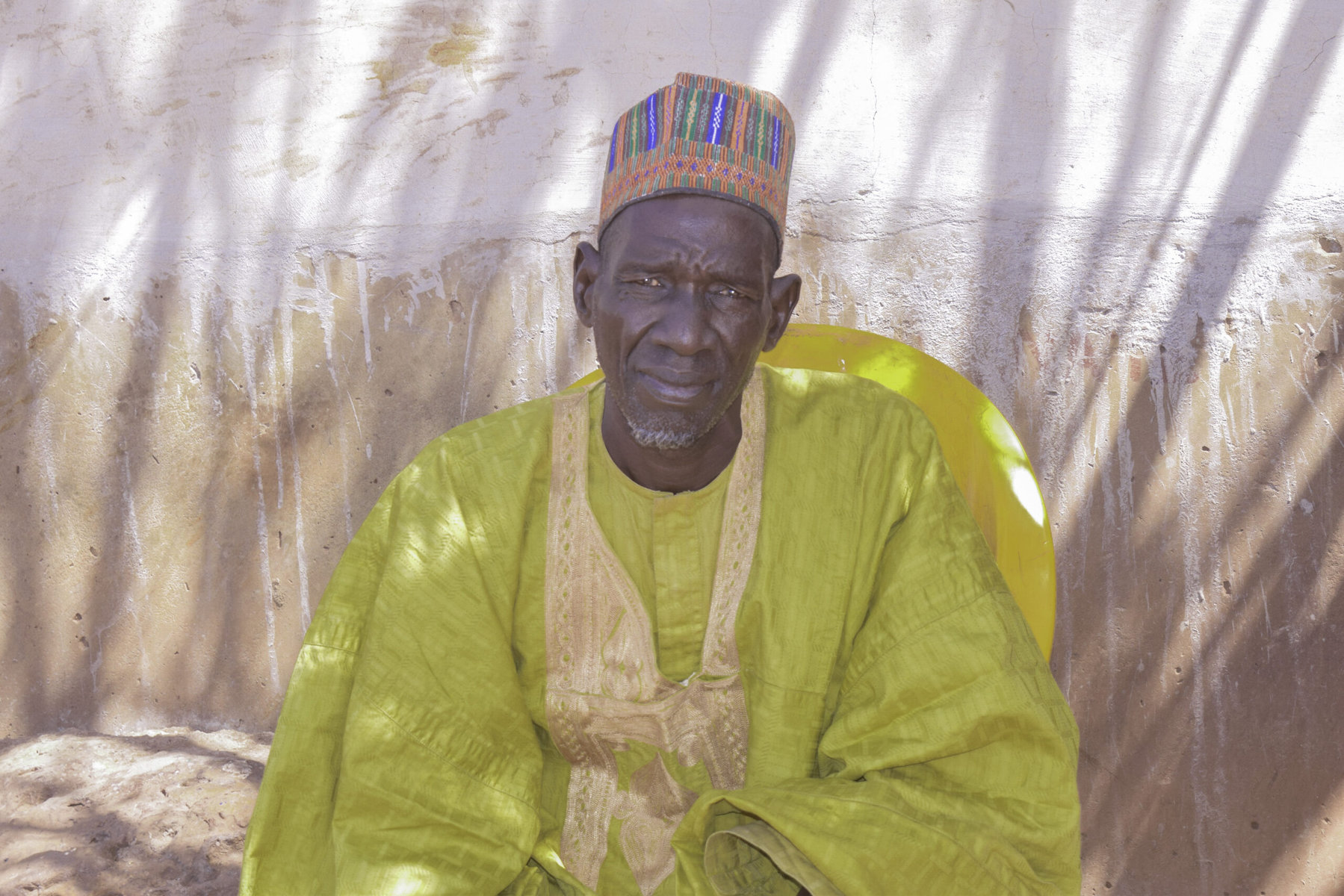 Mu’azu Habibu Sabaru, the chairman of the Joint Disabled Association, resorted to the show after the association’s social welfare stipend was cut in 2022. Credit: Abdullah Tijani
Mu’azu Habibu Sabaru, the chairman of the Joint Disabled Association, resorted to the show after the association’s social welfare stipend was cut in 2022. Credit: Abdullah Tijani
Among those who can relate to this are members of Sokoto’s differently-abled community, whose government-issued monthly allowance was withheld for almost a year before they presented their case on Kukana.
Mu’azu Habibu Sabaru, the chairman of the Joint Disabled Association, a coalition of different groups of people with disabilities, explains that the social welfare program was first introduced in 2007 and included a monthly stipend of ₦6,500 ($4.16), which was issued to about 7,000 beneficiaries. However, over the years, the payment disbursement became increasingly irregular until it was halted completely in June 2022.
“It was only after we went on Kukana that the governor visited us,” Sabaru says “He had heard our complaint on the radio show.”
Not long after the meeting, the government resumed the program. Sabaru even revealed that the monthly stipend was upped to ₦10,000 ($6.30).
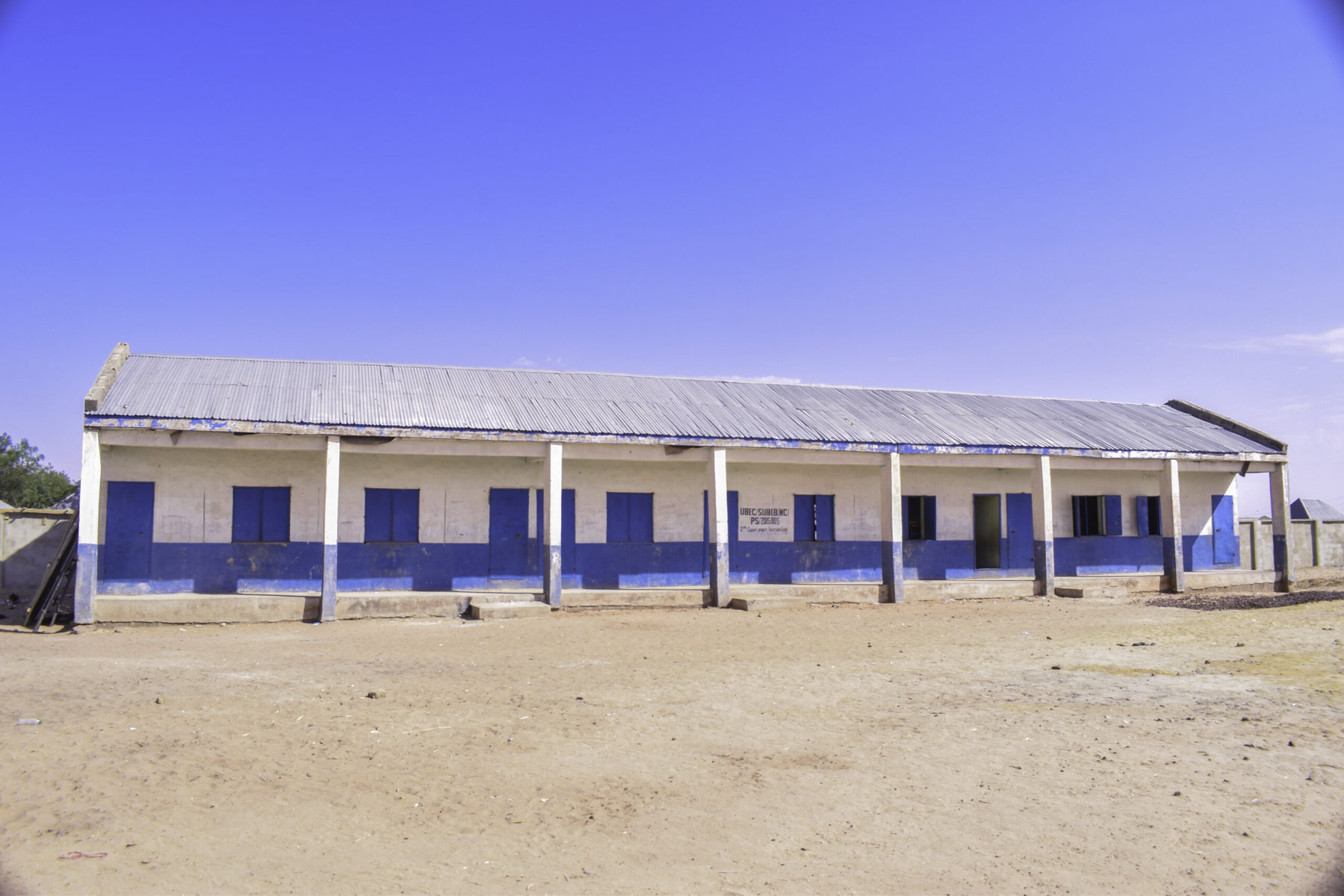 After a resident from Kurfi voiced concerns about illegal encroachment on government school land during a segment on Kukana, the land infringement stopped completely. Credit: Abdullah Tijani
After a resident from Kurfi voiced concerns about illegal encroachment on government school land during a segment on Kukana, the land infringement stopped completely. Credit: Abdullah Tijani
Over the past seven years, Kukana’s team says they’ve been instrumental in transforming the lives and addressing the grievances of more than 100,000 individuals.
“Kukana has helped a lot of people. Sometimes a community of more than a thousand people would be impacted,” he adds.
The host recalls an incident involving a resident from Kurfi, a village outside of Sokoto, who voiced concerns about illegal encroachment on government school land during a segment on Kukana. Following his appearance on the show, it seemed as though “the perpetrator was deterred, because the land infringement ceased altogether.”
“After the case, the government went there and started building a wall around the school. I was so elated when I heard this,” he exclaims.
In Nigeria, the simplicity and wide reach of radio as a mass communication tool have primed it to become a viable last resort for many victims of injustice, according to Lekan Otunfodurin, the executive director of Media Career Development Network, a nonprofit group that trains aspiring media professionals.
“Much like mass religion, radio’s appeal is far-reaching,” Otunfodurin notes regarding the success of radio shows focused on advocacy.
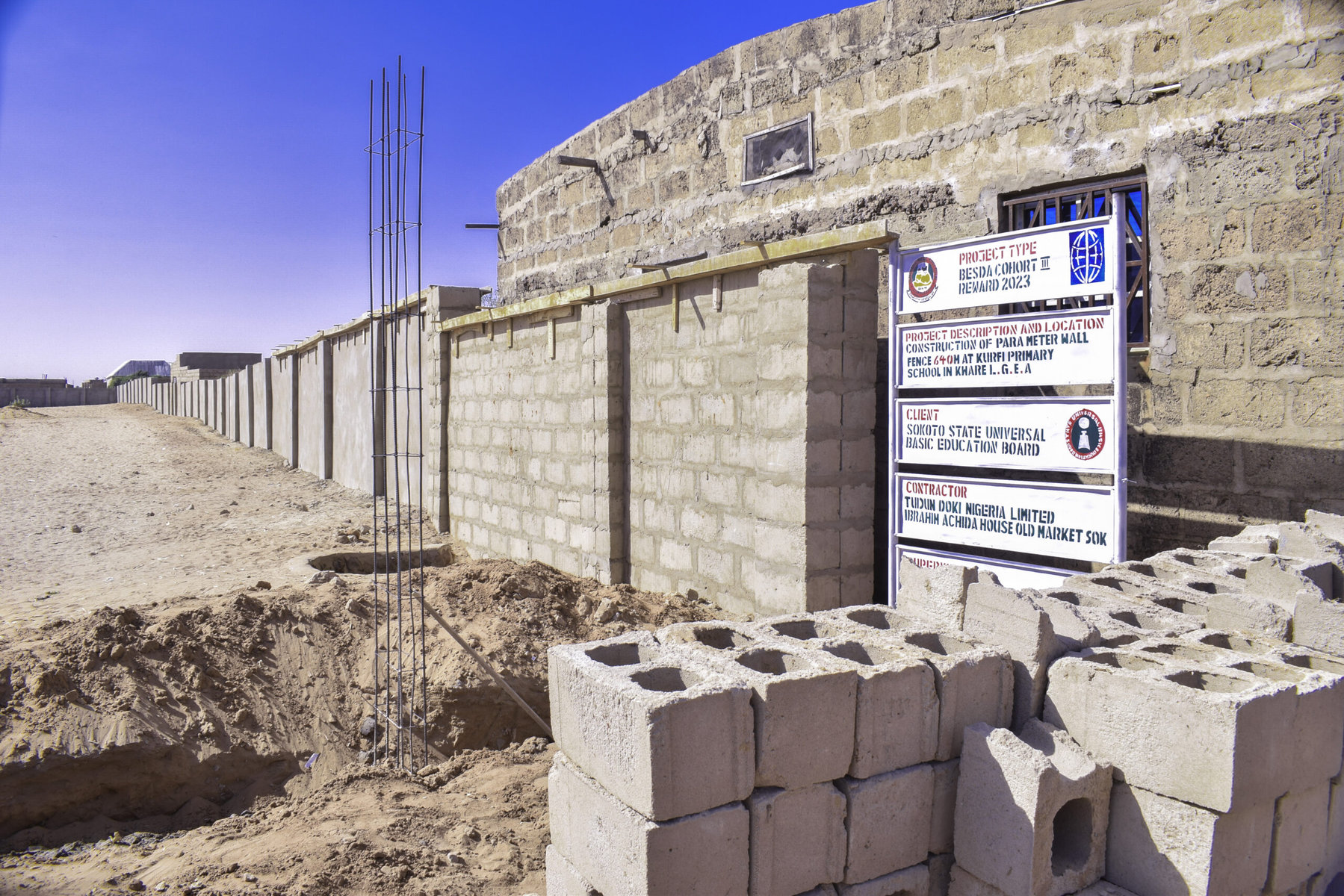 The school land in Kurfi village, Sokoto, that has been saved thanks to the radio show. Credit: Abdullah Tijani
The school land in Kurfi village, Sokoto, that has been saved thanks to the radio show. Credit: Abdullah Tijani
Like Kukana, Berekete Family is another reality radio and television program focused on civil rights. It airs on Human Rights Radio 101.1 in Abuja, Nigeria’s capital, and streams online on several social media platforms. The program, hosted by Ahmed Isah, invites people to share their problems and grievances on air while Isah tries to bridge the gap between claimants and relevant authorities.
Otunfodurin believes that despite the predominance of online media and television, radio remains important through social justice platforms such as Kukana and Berekete Family.
“The lesson here is that radio, as a form of media, is still relevant and very important in seeking justice,” Otunfodurin says. “It also costs less when compared to other forms of media.”
Despite these successes, there are times when the show’s crew feels hopeless. In many cases, the accused refuse to give their account of the story when approached by Kukana, halting any potential progress that could bring justice to the victims.


Become a sustaining member today!
Join the Reasons to be Cheerful community by supporting our nonprofit publication and giving what you can.
“There was a case of a man who came to complain that an army officer driving a car hit his mother, who died from her injuries,” Isa says. “We approached [the officer] to confirm the story and hear his side, but he declined. All efforts to get him to speak to us failed, and we couldn’t air the story.”
This type of challenge is not unique to Kukana, as noted by Otunfodunrin, who believes that all media outlets engaged in investigative journalism or advocating for justice for the oppressed encounter such issues at some juncture.
“What the host [of Kukana] can do in this situation is seek collaboration with other media platforms, especially ones with a national presence, to make the story public,” Otunfodunrin explains. “When more people are engaged, the perpetrators would be forced to grant investigators an audience.”
The article is published in collaboration with Egab.
The post Finding Justice Over the Airwaves appeared first on Reasons to be Cheerful.